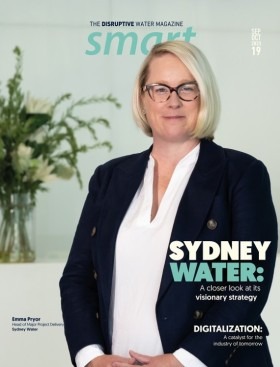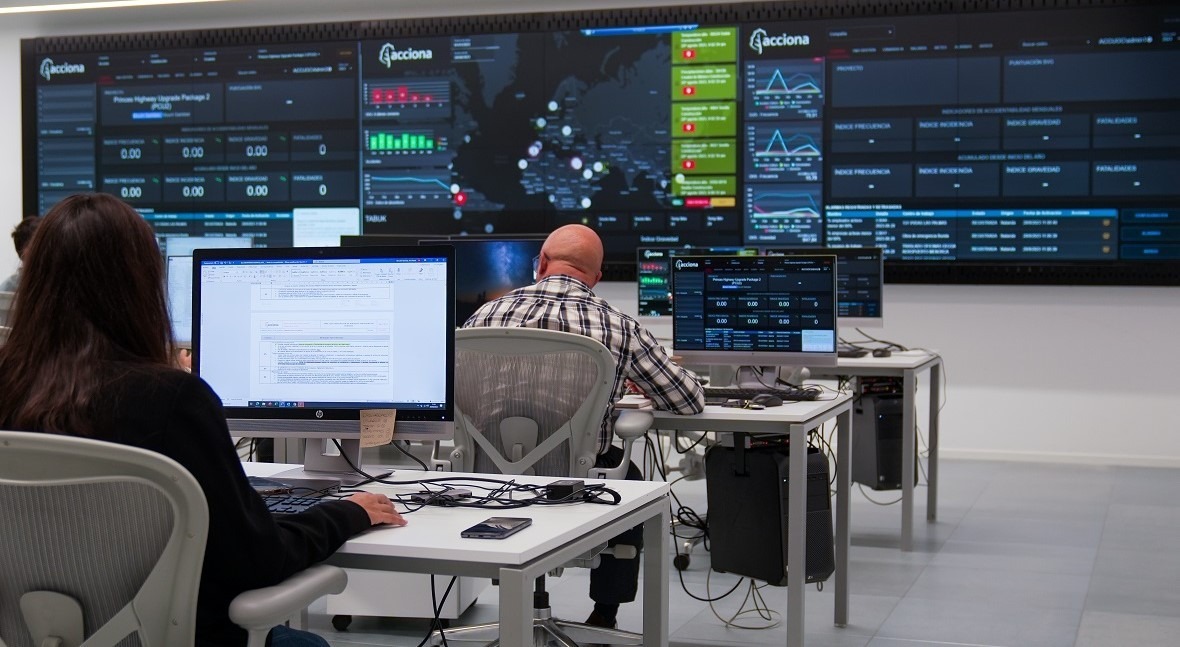Closing the loop on sustainable water management

Looking the other way in times of drought is something that, as companies dedicated to caring for our source of life, we cannot afford. Water, a common good, is becoming increasingly scarce.
Responsible consumption and use, and efficient water treatment processes are not a choice, but an obligation. Now is the time when the circular model of production and consumption must prevail over the linear model (buy-use-throw away) if we want to safeguard our planet and its freshwater reserves, which make up only 2.5% of the total land surface.
On the other hand, we know that 45% of global emissions are due to our form of production, so the circular economy is seen as the preferred alternative to help keep global warming below 1.5 °C, as required by the Paris Agreement. To achieve this goal, emissions need to be reduced by around 45% by 2030 and reach net zero by 2050.
At ACCIONA, as part of our strategy and commitment to the Sustainable Development Goals (SDGs), we are clear about this and have been working on it for years within the company’s main business areas (Water, Construction, Energy, Waste and Mobility). This has enabled us to establish a circular strategy based on the industrial symbiosis of our businesses.
How do we apply the Circular Economy at ACCIONA?
The Ellen MacArthur Foundation, a world reference in the field of the Circular Economy, states that the most important pillar that supports the economic model of the circular economy is the application of the 7Rs rule, a concept born from the 3Rs, defined as "reduce, reuse and recycle". It is a rule that should be applied from the beginning of the design of a product to the way it is consumed, and putting pressure on industries to manufacture products in line with the interests of society: Rethink, Refuse, Reduce, Reuse, Recycle, Redistribute and Reclaim.
Let us reflect on this, applying the first R that appears within the premises of the foundation's model: "Rethink". Let us think about the influence of human beings and how they relate to nature, a fundamental part of this equation, given that their actions have a direct impact on the environment around them.
In today's world, for any software application, technology tool and digital development to have an impact and be meaningful, people have to be – rightly – at the centre of it. It would be logical to think that people are the starting and endpoint of this model.
Every action has a reaction, and in this case, our behaviour in terms of consumption, production and relationship with the environment around us, will have a direct impact on the final result.
We need to start from the bottom, with a sound environmental education and have enough capacity to rethink what surrounds us; these two premises are key to ensuring the best decisions within this model are consistent, also in terms of how to extract, produce and consume; that is, it is in our hands that the model works.
Our behaviour in terms of consumption, production and relationship with the environment, will have a direct impact on the final result
At ACCIONA we have implemented these ideas, prioritizing the needs of our clients and users and their relationship with the environment, taking steps from the conception of our activities and services that support clean energy instead of fossil fuels; encouraging the reuse of wastewater for irrigation, and efficiency in desalination processes as alternative water sources; supporting sustainable agriculture that favours local and seasonal produce, increasing the useful life of our assets through efficiency in our operating processes, mitigating the generation of waste that is harmful to our health such as microplastics in our ecosystem from synthetic textile manufacturing materials, etc.
This model that we have implemented in the water sector from the moment that we start to design infrastructure (treatment plants, networks and services), to then build, operate and maintain them based on the premises and principles of the circular economy, will only be successful if we manage to bring together all actors involved in water cycle management with the end users, in the same chain.
Can technology be the key to applying this model and closing the circle?
Obviously, the answer is yes: right now, there are few challenges that technology cannot tackle in industries, as long as we are clear about the problem we want to solve, the opportunity we want to generate or the process we are going to transform.
The application of technology has given us the ability to establish a sustainable methodology to track our processes and assets
For example, one of the terms we hear the most in the water sector events is "biofactory"; our wastewater treatment plants are real factories of new raw materials (clean water, sludge for agriculture, biogas, fertilizers...) derived from waste input to the facility, but how do we measure this? And more importantly, how do we make them interact with the rest of the actors, so that they can be transformed into a real economy, and the by-products of the above processes can be in the hands of the people who need them in time and manner? In short, how are we able to generate a positive impact and transform the linear model into a circular one?
The only way to improve and generate an impact is by measuring; through the use of technology and digitalisation, we will be able to improve. Thanks to the application of circular economy principles, we will be able to go beyond having a portfolio of circular solutions and close the circle completely, generating wealth and a prosperous economy.
At ACCIONA we are able to know in real time the percentage of circularity not only of the assets but of our water treatment activities
The application of technology has given us the ability to establish a sustainable methodology to track our processes and assets, starting with water and expanding to the rest of our main activities.
Today, at ACCIONA, we are able to know in real time, the percentage of circularity not only of the assets but of each of our water treatment activities.
We have built the first platform capable of integrating the main actors in the water sector and those who are directly impacted by a new way of understanding consumption and production circularly; from our clients, public authorities, farmers, other companies, universities and technology centres to citizens as water users.

Thanks to our platform we have achieved three clear objectives:
- Validate the capture of source and life cycle events for the processes of the entire water cycle.
- Provide a distributed, shared and permanent record to all stakeholders involved in integrated water management through data certification and Smart Contracts; this also provides transparency and data integrity to our users and clients.
- To have a model for measuring circularity, decentralized, but without the drawbacks of cost and energy waste of the traditional blockchain.
We have taken the step that ratifies our commitment to comply with circular economy legislation and with sustainable development goals worldwide, through the first tool to measure circularity in the water sector.
We have integrated everyone in the chain, as validators and users of the future Circular Economy Control Center in the water sector. A core centre for the conception, design and construction of all the infrastructure needed in the water sector and for the efficient management and optimization of all our processes and operations.





